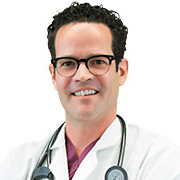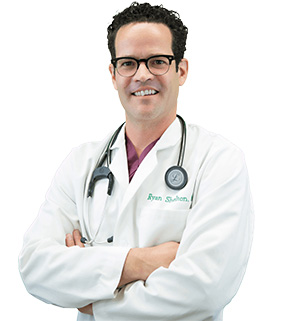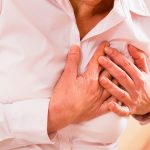Recently, I had a female patient in her early 50s come into my office in tears. She was upset because she applied for life insurance at a premium rate and was denied for the sole reason that her total cholesterol was elevated. I want to share some of the information I gave her so you have the facts on cholesterol and how it’s a potential risk factor for cardiovascular disease and stroke.
This patient is a professor at a local university, so she’s extremely intelligent and asked relevant questions. Is cholesterol a myth or a controversy? Is there valid debate surrounding the benefit of cholesterol medication or is the evidence and the scientific consensus on one side of the issue? Has data been manipulated by researchers to corroborate their theories simply so they get more grant money?
Cholesterol Myth Here’s The Truth
The Science of Cholesterol
It is clear that among adults in industrialized countries, one-fourth of all deaths result from arterial blockage caused by atherosclerotic plaques. ‘Total cholesterol’ is a phrase used to refer to all circulating cholesterol molecules and is totaled by adding LDL, HDL, and VLDL, and it is distinct from triglycerides. However, LDL and HDL are proteins which envelop and carry cholesterol.
The key thing about cholesterol is the size of the particle, the density of the particle, and whether or not the particle is oxidized. In a lipoprotein, you have proteins carrying fatty acids and cholesterol weaving in and through it. It begins as a chylomicron, which is basically a joint effort between your liver and intestines to absorb fat. Chylomicron becomes VLDL, which becomes IDL, which becomes LDL, which ultimately becomes HDL. As VLDL and LDL go around the bloodstream to distribute fatty acids and cholesterol to cells around the body, it becomes denser.
Apolipoprotein and its receptor site in the liver are key proteins that allow the liver to reabsorb fatty acids and cholesterol. Unfortunately, sugar can glycate and disrupt the apolipoprotein binding site, preventing the cholesterol and fatty acids to be reabsorbed by the liver.
LDL brings fatty acids and cholesterol from the liver and then circulates them to tissues. They move slowly and are susceptible to oxidation compared to HDL by free radicals. Unfortunately, sugar can oxidize LDL which then contributes to cardiovascular disease. This means that LDL is often named the bad cholesterol, but is ‘bad’ a pejorative term?
In 2016, 16 out of 19 showed an inverse relationship between total LDL and all-cause mortality. That means as total LDL went up, all-cause mortality went down, and vice-versa. Total LDL does not take into consideration the size of the particle or how much it’s oxidized. As a marker, we can use lipoprotein(a) because it only attaches to oxidized LDL particles. HDL brings circulating cholesterol and fatty acids back to the liver in order to clear them from the blood, be recycled, and hopefully removed from the body.
Cholesterol is essential for human health and plays important roles in cell membranes, and it’s a precursor to many hormones and vitamin D. The body produces about 2000 milligrams of cholesterol a day. To put that into perspective, an egg contains about 300 milligrams of cholesterol.
High cholesterol, particularly LDL, may be a compensatory physiological response to arterial injury, inflammation, and stress. Cholesterol is needed for tissue repair and is a precursor to stress hormones like cortisol. You can think of cholesterol as the body’s Band-Aid and attempt to heal the inflammation in the arteries. Cholesterol is not the culprit, but the middleman instead. Inflammation and oxidation are the culprits.
How Atherosclerotic Plaques Form
Inside every blood vessel is something called the glycocalyx, which is a fuzzy, furry lining. Unfortunately, oscillating sugars, foods high in lectins, and oxidized LDL can damage the glycocalyx. Once it’s been damaged, small LDL particles slip into the subendothelial layer of arteries. LDO and white blood cells called macrophages can slip though as well, forming a huge foam cell. Macrophages start to scavenge receptors for damaged, oxidized LDL particles, which attracts more oxidized LDL particles. This foam cell ultimately attracts calcium as well, ultimately leading to atherosclerotic plaque or hardening of the arteries. The blood flow through the artery decreases, and when it becomes destabilized, there are problems of heart attack and stroke.
Research of cholesterol and its relationship to cardiovascular disease began in earnest in the 1950s, and then regulation of cholesterol metabolism was extensively studied by several scientists in the US in the 1960s. Cholesterol in the body can be derived from what is absorbed from diet, chylomicrons, and from what is synthesized in the body by the liver. The former type is supplemented by the latter if the required levels are not met. Once the former type of exogenous dietary cholesterol reaches its required level, the liver’s synthesis function of cholesterol is suppressed to prevent excessive production of cholesterol.
The suppression of cholesterol synthesis in the liver is mediated through changes of an enzyme called HMG-CoA reductase, which catalyzes the conversion of HMG-CoA to another compound. Changes in reductase activity are closely related to changes in the overall rate of cholesterol synthesis. The liver can take up both LDL and HDL, but it cannot take up oxidized LDL.
In humans, cholesterol is produced in the liver and when it exceeds what is absorbed from the diet, the liver backs off its synthesis. This suggested to researches and drug developers that the inhibition of HMG-CoA reductase would be an effective means of lowering plasma or blood cholesterol in humans.
Studying Cholesterol
The controversy between cholesterol and cardiovascular disease began early. The first studies compared the cholesterol between rabbits and dogs, but other scientists sad, “No, that’s not relevant because rabbits are vegetarian and dogs are carnivores.”
The next study was called the Honolulu Study, which compared Japanese men living in Japan compared to Japanese men who moved to Hawaii. When they moved to Hawaii, their risk factors and rate of cardiovascular disease and stroke went up. Maybe environment or maybe diet has an effect here.
A famous study began in 1948, called the Framingham Heart Study, coined the term risk factor for cardiovascular disease. It’s since become part of medical dogma for cardiovascular disease and stroke ever since.
The next studies were on particular diets, and the first one looked at individuals moving from a diet high in saturated fat to a diet high in polyunsaturated fat. Sure enough, individuals moving from polyunsaturated fat had lower risk factors and incidences of cardiovascular disease and stroke.
Drug companies said, “You know what? People aren’t going to change their diet, so let’s develop a drug.” They developed medications that block cholesterol absorption, an HMG-CoA reductase inhibitor, and a drug that work through the LDL receptors on the liver.
HMG-CoA reductive inhibitors work through other mechanisms as well. They’re anti-inflammatory, reducing C-reactive protein and decreasing advanced glycation end products. They’re the second or third most commonly prescribed drug in the United States.
We know that lowering cholesterol reduces the risk of cardiovascular events and mortality, but ultimately, we just want to live a long and happy life. A meta-analysis looked at 11 studies with 90,000 total participants to see what the average lifespan increase would be. The average lifespan increase of individuals taking statin with a history of cardiovascular disease was only five to six days, and just three and a half days in individuals without cardiovascular disease.
An increase in LDL receptor statins can cause an increase in LDL receptors in the liver, which is great. They take in LDL, but not oxidized LDL, which can increase the ratio of oxidized to non-oxidized by 10%. When it comes to medication, about 25% of individuals have side effects to statin medications. 1 in 10 cannot tolerate statins, means taking two different statins at the lowest dose instead. Common side effects include myalgia, muscle soreness or pain, liver damage, and an increased risk for diabetes. It also inhibits the production of an important nutrient called CoQ10, which is metabolized by HMG-CoA reductase. If you take a statin medication, please supplement with CoQ10.
Making Diet and Lifestyle Changes
The fact is that the benefits of statins are severely limited without diet and lifestyle changes. In fact, a recent quote from Mayo Clinic doctor said, “You can overeat your statin.” A pill will never be a replacement for lifestyle changes.
You need to avoid saturated fats, trans fats, diets high in sugar, refined carbohydrates, and unfiltered coffee. These things can exacerbate LDL and oxidized LDL. Skipping breakfast and other meals can be problematic, so eat small meals frequently.
Add more polyunsaturated fats, nuts, seeds, and fish to your diet. You should also add monosaturated fats like olives and olive oil. Specific foods that help LDL and oxidized LDL include rice, bran, oil, oat bran, soy, nuts, seeds, tomatoes, complex carbohydrates, foods high in stanols and sterols, and fruits and vegetables that are high in fiber. I recommend nine servings of five colors of produce each and every day.
Consider taking supplements like vitamin B5, niacin, calcium, chromium, garlic, copper, L-carnitine, and red yeast rice. Garlic has 17 positive studies showing it can reduce LDL and increase HDL. Red yeast rice is interesting because it works on HMG-CoA without the side effects of statins.
Keto and paleo diets are more effective than low-fat diets for LDL particles, oxidized LDL particles, increasing HDL, and decreasing triglycerides. Remember, the culprit is not cholesterol. It’s inflammation! You have to get free radicals, oxidation, and inflammation under control.
There are other important risk factors for cardiovascular disease and stroke, like high blood pressure, high triglycerides, high homocysteine, high c-reactive protein, high lipoprotein-a, high fibrinogen, and high platelet aggregation. Looking at that list, most of these are indicators of high inflammation and not a high total of cholesterol.
The Need for Melatonin
The final thing I want to point out is that melatonin is one of the most powerful antioxidants our body naturally produces. Melatonin is the sleep hormone produced at night when it’s totally dark, so make sure your bedroom is completely dark with no ambient light, no technology, no alarm clock, or television. Your eyes communicate with your brain when it’s completely dark to promote the production of melatonin. Melatonin is cardioprotective because of its antioxidant properties, so consider taking it as a supplement.
If you have questions about LDL and its relationship to cardiovascular disease and stroke, please let me know. I want you to understand the true relationship between cholesterol and cardiovascular disease. I’ll help you achieve and maintain optimal health.
If you liked this video/article, do share it with your friends and loved ones. Subscribe to the Youtube channel for weekly tips on new tools and techniques to improve your health and well-being.
I believe in the original meaning of the word doctor, ‘docere’, which means teacher. I’m here to help educate you on how to take care of yourself in ways that you may not have heard of before, but that are effective. I always want to hear your ideas and feedback so be sure to leave me comments below!










